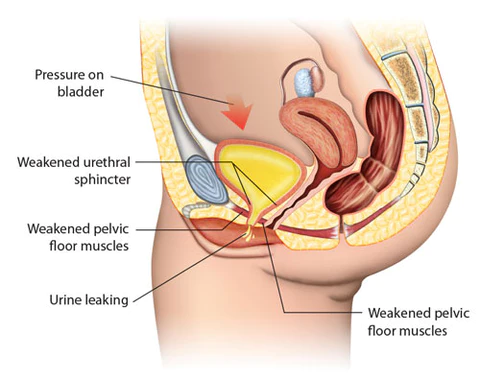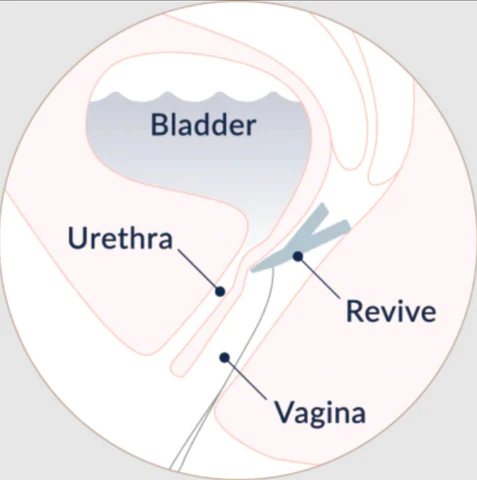By Dr. Janet Williams, MD, Ob/Gyn
You finally get an afternoon with the old crew for brunch. You’re 2 mimosas in, having fun and laughing hysterically when suddenly you feel…a little pee leaking out. Damn it…why now?!! Your mood suddenly shifts, you excuse yourself to the bathroom feeling embarrassed, isolated and worried your outfit and afternoon may be ruined. This is the cruel face of stress urinary incontinence.
The truth of the matter is stress urinary incontinence is extremely common. It is estimated that 1 in 3 women will have urinary incontinence throughout the course of their lives. This can be extremely distressing and can negatively affect our quality of life. The good news is we’re here to talk about it and more importantly provide some simple solutions.
What is it?
By definition urinary incontinence is the unintentional loss of urine. More specifically stress incontinence (SUI) happens when physical movement or activity — such as coughing, laughing, sneezing, running or heavy lifting — puts pressure (stress) on your bladder, causing you to leak urine. Despite its name stress incontinence has nothing to do with psychological or emotional stress.
The main symptom people with SUI experience is leaking urine during any activity that increases abdominal pressure. This can be a couple of drops to a tablespoon or more. Common activities that can cause leaking are sex, exercise, coughing, laughing and lifting. But in some more involved cases it can happen with bending and standing.
Why is this happening?
The muscles of the pelvic floor are much like a woven basket or hammock. When these muscles are strong they support the bladder and the urethra and the bladder and urethra work together to control when and how urine comes out.
Due to genetics, age, childbirth, nerve injury, hormonal changes and/or certain chronic illnesses the muscles of the pelvic floor can become stretched, weakened or damaged. This results in poor support of the urethra and subsequent leaking with added abdominal pressure.

For many, stress urinary incontinence is extremely frustrating and isolating. Some people will stop doing activities outside of their home in fear of urine leaking and catching them off guard. And it certainly can have a negative effect on relationships if left unaddressed.
First say THANK YOU to our pelvic floor!
Before you go out and boycott your pelvic floor, I’d like to take a moment to reframe how we think about our bodies and the challenges they face. In my opinion our bodies are rock stars with all of the work they do for us every day without us even thinking about it. For many, our pelvic floors have held all of our organs inside, grew pregnancies, birthed humans, housed intimate pleasure, protected us from and/or survived trauma, held the nerves and blood vessels that provide sensation to our thighs, legs and feet…and so much more. So, please say thank you to your pelvic floor! Now as an additional thank you to your body let’s delve into how we can adjust to urinary incontinence.
So what can be done?
In some cases surgery is an option but waaaaay before we get to surgery, there are several simple behavioral practices and solutions that can make an amazing difference. I always suggest the least invasive options before the more involved ones. So here goes:
Quit smoking – Quitting smoking is great for your health in general but specifically, smoking may add additional strain to the pelvic floor and as such worsen incontinence. Also, smoking related chronic cough can worsen frequency and severity of leaks. If you’re a smoker that’s one more reason to quit. I realize that is easier said than done and I suggest you talk to your doctor about quitting smoking since there are medications that can be prescribed to help you stop.
Timed voiding – This is a way of timing when you urinate to avoid leaks and also build strength in the muscles around the bladder in an intentional way.
Avoid constipation – Constipation can make incontinence worse. You can prevent constipation by staying hydrated, eating a high fiber diet and getting regular exercise. A probiotic may also be helpful.
Pelvic floor muscle exercises (Kegel Exercises) – Kegels, Kegels, Kegels. This is one of my favorite solutions. Because you can do Kegel exercises anytime and anywhere they are like a secret weapon to getting the muscles of the pelvic floor strong again. Exercise specifically for the pelvic floor can improve the tone of the floor, increase blood flow to the area, increase lubrication and sensation. You perform Kegels by squeezing and relaxing the pelvic floor muscles several times each day. Let’s pause and all do round of Kegels right now…..well done! If that was difficult to do there are several great Kegel exercise devices and products that aid with focusing to the exact muscles needed to support the pelvic floor.
Other tools used to manage SUI include absorbent pads, vaginal pessaries, urethral support devices and vaginal toning devices. Pads absorb unintended leaks but don’t do much to really address the problem. A vaginal pessary may be a little more helpful. This is a flexible but firm device fitted by your doctor or other healthcare provider. It is inserted into the vagina to reposition and support the urethra. It is usually made of medical grade silicone. If fitted properly, it can be worn 24 hours a day but most women remove them at night. They also must be removed prior to intercourse.
Another fantastic option is the Revive Bladder Support Device. This reusable over-the-counter solution is inserted much like a tampon and provides gentle internal urethra support that results in decreased bladder leakage. There are disposable body safe strings that are used to remove the device after each use.

Multimode Vaginal Toning Devices – Toning devices like the Vfit Gold Vaginal Rejuvenation Device are fantastic options available to decrease stress urinary incontinence. Multiple studies have shown improvement in SUI along with sexual function and quality of life after self administered sessions. This is a relatively inexpensive alternative to surgical management.
Summing up
Bladder leaking is very common and is related to the changes that occur in the pelvic floor support. Rather than beating ourselves up about it or feeling ashamed we should realize that this is a common problem that sooo many women are dealing with. If you are dealing with urinary incontinence I encourage you to thank your body for all it has done for you and show it some love by making some of the changes above and looking into our selection of helpful products here.
Disclaimer: This is not medical advice, does not take the place of medical advice from your physician, and is not intended to treat or cure any disease. Patients should see a qualified medical provider for assessment and treatment.



